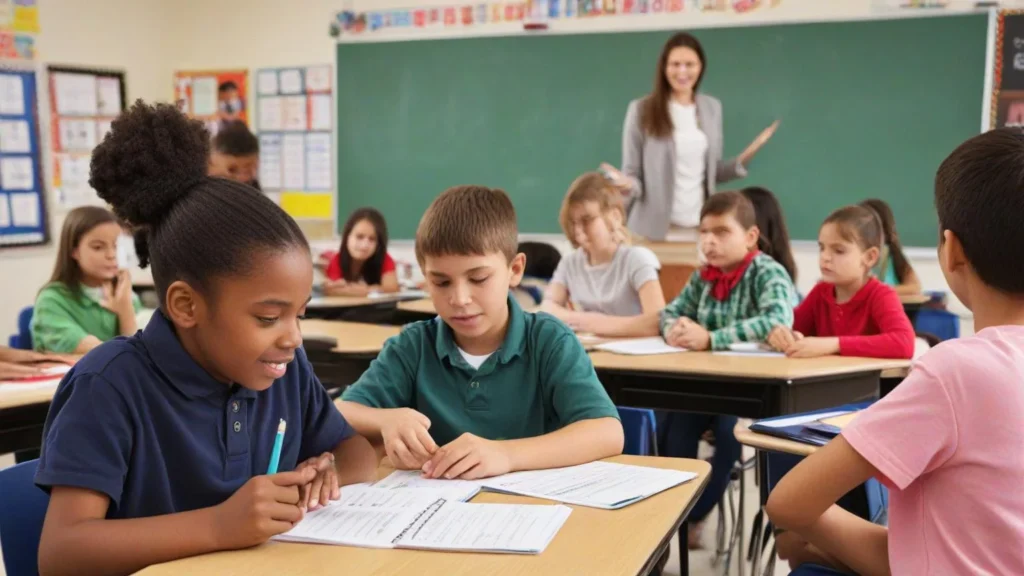Effective classroom management is crucial for creating a productive and positive learning environment. It involves a range of strategies and techniques that help teachers maintain order, engage students, and promote a conducive atmosphere for learning. This article explores the best practices for classroom management, including the 5 P’s, the 4 C’s, and the 3 C’s of classroom management, and provides practical tips for successful classroom management.
What Are the 5 P’s of Classroom Management?
The 5 P’s of classroom management are essential principles that guide teachers in creating and maintaining an effective classroom environment. These principles help teachers address various aspects of classroom management, from setting expectations to handling disruptions.
Purpose
- Definition: Establish clear objectives for lessons and classroom activities.
- Best Practice: Define the learning goals and communicate them to students.
- Example: Share the lesson objectives at the beginning of each class to ensure students understand what they are expected to learn.
Prevention
- Definition: Implement strategies to prevent classroom disruptions and behavioral issues.
- Best Practice: Develop rules and routines that set expectations for behavior.
- Example: Establish classroom rules like “Raise your hand to speak” and routines for transitioning between activities.
Praise
- Definition: Reinforce positive behavior and acknowledge students’ efforts.
- Best Practice: Use praise to encourage good behavior and academic achievements.
- Example: Offer verbal praise like “Great job on that assignment!” or use a reward system to recognize students’ positive actions.
Practice
- Definition: Provide opportunities for students to practice new skills and behaviors.
- Best Practice: Design activities that allow students to apply what they’ve learned.
- Example: Incorporate practice exercises and group work where students can demonstrate their understanding of the material.
Persistence
- Definition: Continue to enforce rules and address issues consistently.
- Best Practice: Be consistent in applying rules and managing classroom behavior.
- Example: If a rule is broken, apply the agreed-upon consequence every time to maintain fairness and order.
What Are the Four C’s of Classroom Management?

The Four C’s of classroom management are key components for creating a successful learning environment. These elements focus on establishing effective management practices that foster a positive classroom atmosphere.
Clarity
- Definition: Clearly communicate expectations and instructions.
- Best Practice: Provide clear and concise instructions for tasks and behaviors.
- Example: Use simple language and repeat instructions if necessary to ensure all students understand.
Consistency
- Definition: Apply rules and procedures uniformly.
- Best Practice: Be consistent in enforcing rules and responding to behavior.
- Example: If a student breaks a rule, apply the same consequence as you would for any other student in the same situation.
Control
- Definition: Maintain authority and manage classroom behavior.
- Best Practice: Use techniques to keep students focused and engaged.
- Example: Implementing structured routines and monitoring students’ behavior to prevent disruptions.
Communication
- Definition: Foster open and effective communication with students.
- Best Practice: Encourage students to express their thoughts and concerns.
- Example: Hold regular discussions about classroom expectations and listen to students’ feedback.
What Are the Three C’s of Classroom Management?
The Three C’s of classroom management provide a framework for addressing the core aspects of managing a classroom environment. These principles help teachers create a supportive and effective learning space.
Connection
- Definition: Build positive relationships with students.
- Best Practice: Show interest in students’ lives and create a supportive atmosphere.
- Example: Engage in conversations with students, attend school events, and show empathy towards their concerns.
Consistency
- Definition: Maintain a steady approach to rules and procedures.
- Best Practice: Apply classroom rules and consequences in a fair and predictable manner.
- Example: Follow through with established consequences for misbehavior and consistently reinforce positive behavior.
Clarity
- Definition: Ensure that expectations and instructions are clear.
- Best Practice: Clearly articulate what is expected from students in terms of behavior and academic performance.
- Example: Display classroom rules and provide written instructions for assignments to avoid confusion.
What Are the Practices of Classroom Management?

Effective classroom management practices involve a range of strategies and techniques aimed at creating a productive and positive learning environment.
Establishing Clear Expectations
- Definition: Set and communicate clear expectations for behavior and academic performance.
- Best Practice: Develop and share classroom rules, procedures, and routines.
- Example: Create a classroom rule poster and review it with students at the beginning of the school year.
Developing a Positive Classroom Culture
- Definition: Create a respectful and supportive classroom environment.
- Best Practice: Foster a culture of mutual respect and inclusivity.
- Example: Promote respect through classroom activities and discussions that encourage empathy and understanding.
Implementing Effective Classroom Procedures
- Definition: Establish routines for daily classroom activities.
- Best Practice: Develop procedures for common classroom tasks.
- Example: Create a consistent procedure for turning in homework and transitioning between activities.
Using Positive Reinforcement
- Definition: Encourage desirable behaviors through rewards and praise.
- Best Practice: Recognize and reward positive behavior to reinforce it.
- Example: Use a token system or verbal praise to reward students for following classroom rules and participating in lessons.
Managing Disruptions Proactively
- Definition: Address disruptive behaviors before they escalate.
- Best Practice: Implement strategies to prevent and manage disruptions.
- Example: Use non-verbal signals or quiet reminders to redirect off-task behavior.
Engaging Students in the Learning Process
- Definition: Create engaging and interactive lessons.
- Best Practice: Design activities that capture students’ interest and encourage active participation.
- Example: Incorporate group work, hands-on activities, and multimedia resources into lessons.
Maintaining Open Communication with Parents
- Definition: Engage with parents to support students’ academic progress.
- Best Practice: Keep parents informed about their child’s performance and behavior.
- Example: Send regular updates through newsletters, emails, or parent-teacher conferences.
Providing Clear and Consistent Feedback
- Definition: Offer constructive feedback on students’ work and behavior.
- Best Practice: Give timely and specific feedback to help students improve.
- Example: Provide detailed comments on assignments and discuss areas for improvement during one-on-one meetings.
Promoting Student Autonomy
- Definition: Encourage students to take responsibility for their own learning.
- Best Practice: Give students opportunities to make choices and set goals.
- Example: Allow students to select project topics or set personal academic goals.
Creating a Safe and Inclusive Environment
- Definition: Ensure that all students feel safe and included.
- Best Practice: Address issues of bullying and discrimination.
- Example: Implement anti-bullying policies and foster an inclusive classroom environment for all students.
Summary Table of Best Classroom Management Practices
| Practice | Description |
|---|---|
| Establishing Clear Expectations | Set and communicate rules and routines for behavior and academics. |
| Developing a Positive Classroom Culture | Create a respectful and supportive environment for all students. |
| Implementing Effective Classroom Procedures | Establish routines for daily classroom tasks and activities. |
| Using Positive Reinforcement | Reward and praise positive behavior to reinforce good actions. |
| Managing Disruptions Proactively | Address and manage classroom disruptions before they escalate. |
| Engaging Students in the Learning Process | Design interactive and engaging lessons to maintain student interest. |
| Maintaining Open Communication with Parents | Keep parents informed about their child’s progress and behavior. |
| Providing Clear and Consistent Feedback | Offer timely and specific feedback on academic work and behavior. |
| Promoting Student Autonomy | Encourage students to take responsibility for their learning and goals. |
| Creating a Safe and Inclusive Environment | Ensure all students feel safe and included in the classroom. |
Conclusion
Effective classroom management is essential for creating a positive and productive learning environment. By implementing best practices such as establishing clear expectations, using positive reinforcement, and managing disruptions proactively, teachers can foster a classroom atmosphere that supports student success.
The 5 P’s, 4 C’s, and 3 C’s provide frameworks for understanding different aspects of classroom management and guiding effective practices. These principles help teachers maintain order, engage students, and promote a positive educational experience.
Incorporating these strategies into your teaching practices can lead to improved student behavior, increased academic performance, and a more enjoyable teaching experience. By focusing on clear communication, consistency, and positive reinforcement, educators can effectively manage their classrooms and support their students’ growth and success.

